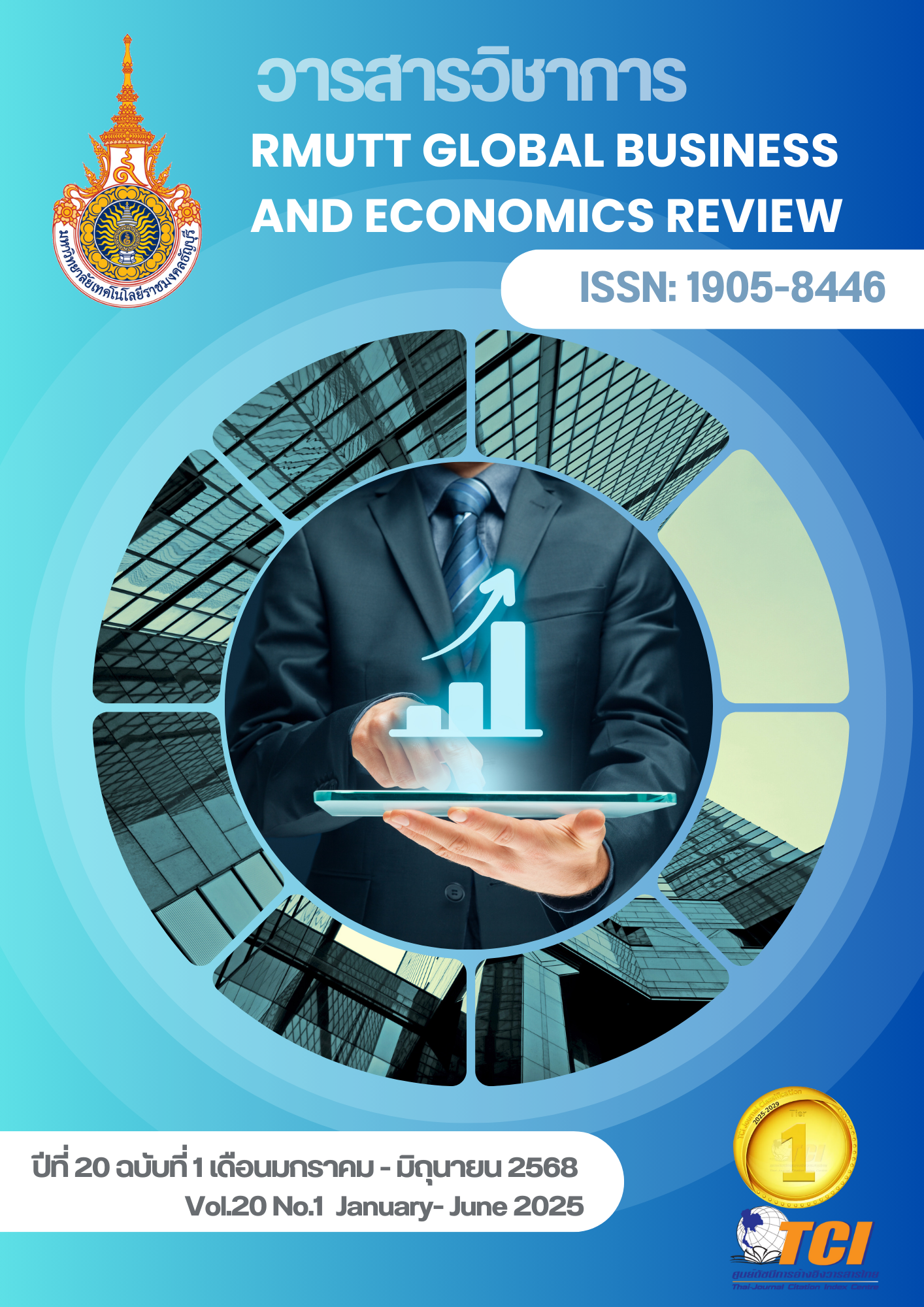THE COMPETITIVE CONTEXT OF DURIAN BUSINESS OF EASTERN AGRICULTURAL COOPERATIVES
DOI:
https://doi.org/10.60101/rmuttgber.2025.278930Keywords:
Business Environment, Competitive Advantage , Agricultural Cooperative , DurianAbstract
The objectives of the research project on the Competitive Context of Durian Business of Eastern Agricultural Cooperatives are to examine the business climate and competitiveness of farmers operating in these cooperatives. Using chain sampling, ten farmers or those engaged in the production and distribution of durian within the Eastern Agricultural Cooperative served as key informants. In-depth interviews were the research technique used during this study. There was some structure to the interview. The information gathered has been put to use with content analysis. The study's findings indicated that the environmental factors of farmers who operate durian businesses in the Eastern Agricultural Cooperatives were at a high level in terms of Industry rivalry, Threat of new entry, Bargaining power of customers, and Bargaining power of suppliers. The only factor that was found to be at a low level was the Threat of substitute products or services. Thai durian possesses a sustainable competitive advantage in terms of reputation, image, and competitiveness. The quality and safety of the produce, as well as the research and development of GI durian, can provide a transient competitive advantage. However, there is a competitive disadvantage associated with the transportation of durian across the boundary.
References
Asa A.R., Nautwima J.P., & Villet H. (2024). An integrated approach to sustainable competitive advantage. International Journal of Business and Society. 25(1), 201-222.
Barney J. (1991). Firm Resources and Sustained Competitive Advantage. Journal of Management. 17(1), 99-120.
Cooperative Promotion Department. (2024). Thailand's Cooperative History. Retrieved from https://www.cpd.go.th/knowledge/general-coop/item/38-historycoop-inthai.html
Department of Agricultural Extension. (2023). Report on the Situation of Perishable crops Production in the Eastern Region in 2023. Retrieved from https://www.doae.go.th/
Division of International Agricultural Economics (2023). Customs Department merchandise trade statistics information. Retrieved from https://www.oae.go.th/
Glaser B.G., & Strauss A.L. (1967). The Discovery of Grounded Theory: Strategies for Qualitative Research. Chicago: Aldine.National Agricultural Research Institute. (2022). Guidelines for developing durian production and marketing in Eastern Thailand. National Agricultural Research Institute.
Nastasi B.K., & Schensul S.L. (2005). Contributions of qualitative research to the validity of intervention research. Journal of School Psychology, 43(3), 177-195.
Porter M.E. (1990). The Competitive Advantage of Nations. The Free Press. New York.
Porter M.E. (1998). Competitive Strategy Techniques for Analyzing Industries and Competitors. The Free Press. New York.
Rothaermel, Frank T. (2021). Strategic management, 5e. (5). New York: McGraw Hill Education.
Downloads
Published
How to Cite
Issue
Section
License
Copyright (c) 2025 Phat Pisitkasem

This work is licensed under a Creative Commons Attribution-NonCommercial-NoDerivatives 4.0 International License.
บทความที่ได้รับการตีพิมพ์เป็นลิขสิทธิ์ของผู้นิพนธ์
ข้อความที่ปรากฏในบทความแต่ละเรื่องในวารสารวิชาการเล่มนี้เป็นความคิดเห็นส่วนตัวของผู้เขียนแต่ละท่านไม่เกี่ยวข้องกับมหาวิทยาลัยเทคโนโลยีราชมงคลธัญบุรี และคณาจารย์ท่านอื่นๆในมหาวิทยาลัยฯ แต่อย่างใด ความรับผิดชอบองค์ประกอบทั้งหมดของบทความแต่ละเรื่องเป็นของผู้เขียนแต่ละท่าน หากมีความผิดพลาดใดๆ ผู้เขียนแต่ละท่านจะรับผิดชอบบทความของตนเองแต่ผู้เดียว







